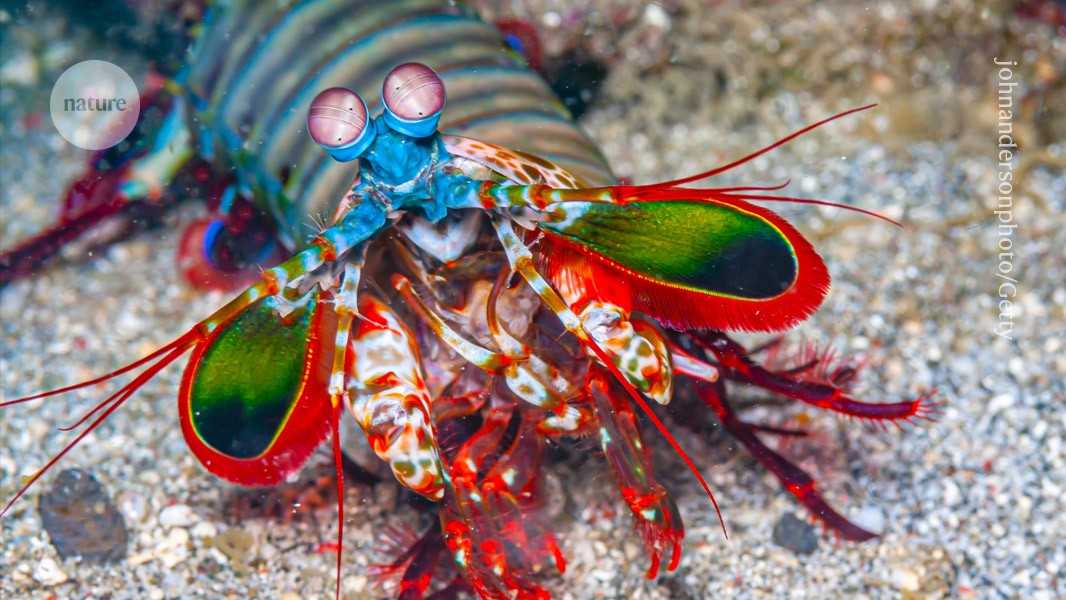Mantis shrimp have the world’s fastest punch — here’s how their limbs survive

Insights from probing the shock-absorbing layer within the crustacean’s club-like claw could inspire the design of tough new materials

The mantis shrimp can smash through the shells of prey with its powerful strike. Credit: johnandersonphoto/Getty
One of the world’s most fearsome crustaceans has evolved to deliver deadly punches to its prey without damaging its own body — and now, scientists have shown how. A study published on 6 February in Science1 reveals that the mantis shrimp’s punching limb — known as the dactyl club — has a multi-layered structure that allows it to absorb the shockwaves it generates when cracking the shells of molluscs or other crustaceans.
The findings could provide inspiration for the design of artificial materials with useful properties, says study co-author Maroun Abi Ghanem, a CNRS physicist who studies biomaterials at the University of Lyon, France. These could be used to make surgical implants that can harvest energy beamed through tissue in the form of ultrasounds, or mechanical filters for mobile phones and other electronics.
Chitin construction
Abi Ghanem and his colleagues analyzed the club of the peacock mantis shrimp (Odontodactylus scyllarus), a species native to the Indian and Pacific oceans.
The club’s exoskeleton, which contains a natural polymer called chitin and a calcium-containing mineral similar to that in human bones and teeth, has three layers. The middle layer is made up of fibres of chitin organized in what is known as a ‘Bouligand structure’. In this layer, the fibres are arranged like bundles of pencils that fan out, so that some point towards the exterior layers, some are parallel to them, and some are at angles in between. The fibres’ orientations aren’t random, but vary in a periodic fashion that repeats every 500 micrometres or so.
Enjoying our latest content?
Login or create an account to continue
- Access the most recent journalism from Nature's award-winning team
- Explore the latest features & opinion covering groundbreaking research
or
Sign in or create an accountdoi: https://doi.org/10.1038/d41586-025-00386-8
This story originally appeared on: Nature - Author:Davide Castelvecchi


















